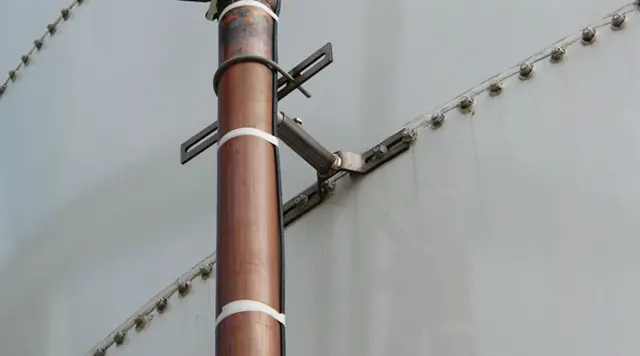
 Tempco’s Heat Trace Cables are used to counteract the effects of heat dissipation from process pipe and equipment through its insulation (if any). This heat loss allows a drop in temperature, bringing about unacceptable consequences such as frozen pipes, reduced fluid viscosity, etc. The use of heat trace cable replaces the heat lost, maintaining the desired temperature through the application of the required wattage.
Tempco’s Heat Trace Cables are used to counteract the effects of heat dissipation from process pipe and equipment through its insulation (if any). This heat loss allows a drop in temperature, bringing about unacceptable consequences such as frozen pipes, reduced fluid viscosity, etc. The use of heat trace cable replaces the heat lost, maintaining the desired temperature through the application of the required wattage.
There are two general categories of Electrical Heat Trace Cable: Constant Wattage and Self-Limiting/Self-Regulating cable. Each style of heat trace cable serves different applications.
1. Constant Wattage Cable
This style of heat trace cable is designed to put out a certain amount of wattage per linear foot at a particular voltage. It is always putting out the designed watts per foot, no matter what the surface or ambient temperature is. This means that in most situations the heating cable is continually pumping heat into the vessel or pipe being maintained or heated. If the heat trace cable is not attached to some kind of control device, it has the potential to overheat itself and burn out. This would not only ruin the cable, but could cause damage to whatever it is being used on. Therefore, constant wattage cable must be controlled by some means.
2. Self-Limiting/Self-Regulating Cable
This cable will self-adjust its power output in relation to the surface temperature as well as ambient conditions. In other words, the hotter the conditions get, the lower the wattage output becomes. This characteristic allows this type of cable to be used without a control device. However, if a particular temperature is required, then a control device must be used.
Note: Both cables are used by all types of industry. It is the user’s requirements that dictate which design to use. Higher temperature maintenance applications will use the constant wattage cables due to the higher maximum exposure temperatures that they allow. Lower temperature maintenance applications, such as freeze protection, can use the self-limiting cable, although constant wattage cable can be used just as effectively as long as it is controlled properly.
Frequently Asked Questions
- Which cable do I need?
Selecting the proper cable depends on many different variables. The pipe size, exposure temperatures, ambient conditions, insulation type and thickness, maintenance temperatures, heat-up rate, flow rate, and type of material involved all play a part in determining which cable is best for your application. Contact Tempco to assist you in making the correct choice.
- What are the requirements for metal overbraid and outer jackets?
Metal overbraid is required on all heat trace cabling to meet NEC code for grounding. The braid provides mechanical protection, as well as a low-resistance grounding path. On self-limiting cable, in addition to the standard metal overbraid, an optional thermoplastic elastomer or fluoropolymer outer jacket is recommended when exposure to organic chemicals or corrosives is expected.
- Can the cable be cut in the field without changing the resistance?
Tempco’s Constant Wattage and Self-Limiting style cable is designed to be a certain wattage per foot within a certain circuit length. All Constant Wattage cables have modules cut out of the bus wire jacket, exposing the bare wire at alternating points at predetermined lengths. The cable is designed to be a certain wattage within this circuit length. These circuits run the length of the spool, similar to short runs of cable run in series to make one long cable. If a circuit is interrupted (cut), the cable will be unheated up until the next complete circuit.
